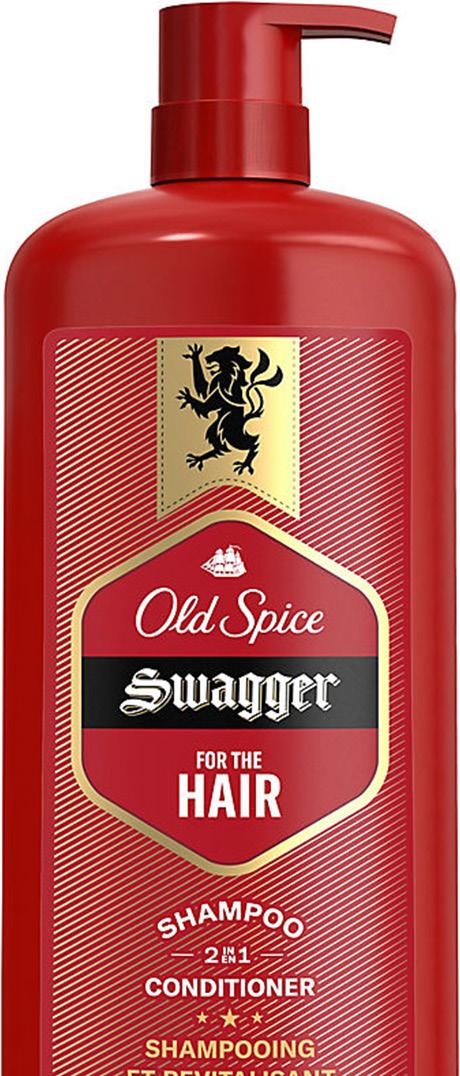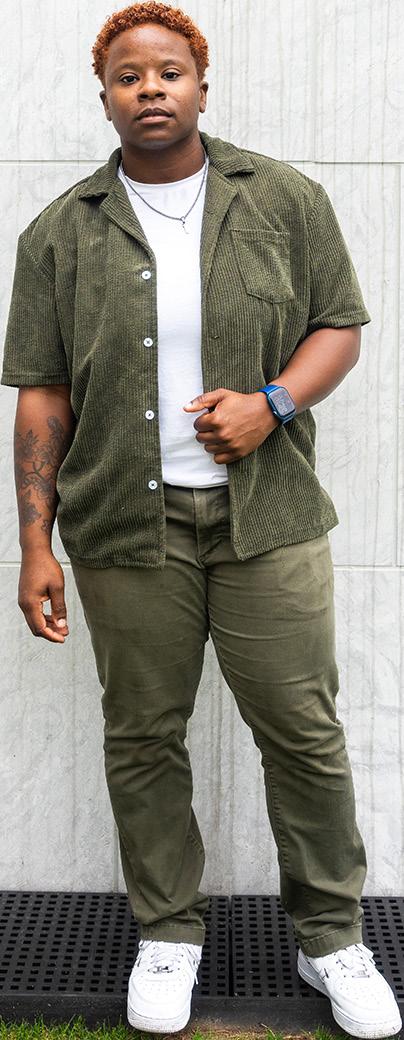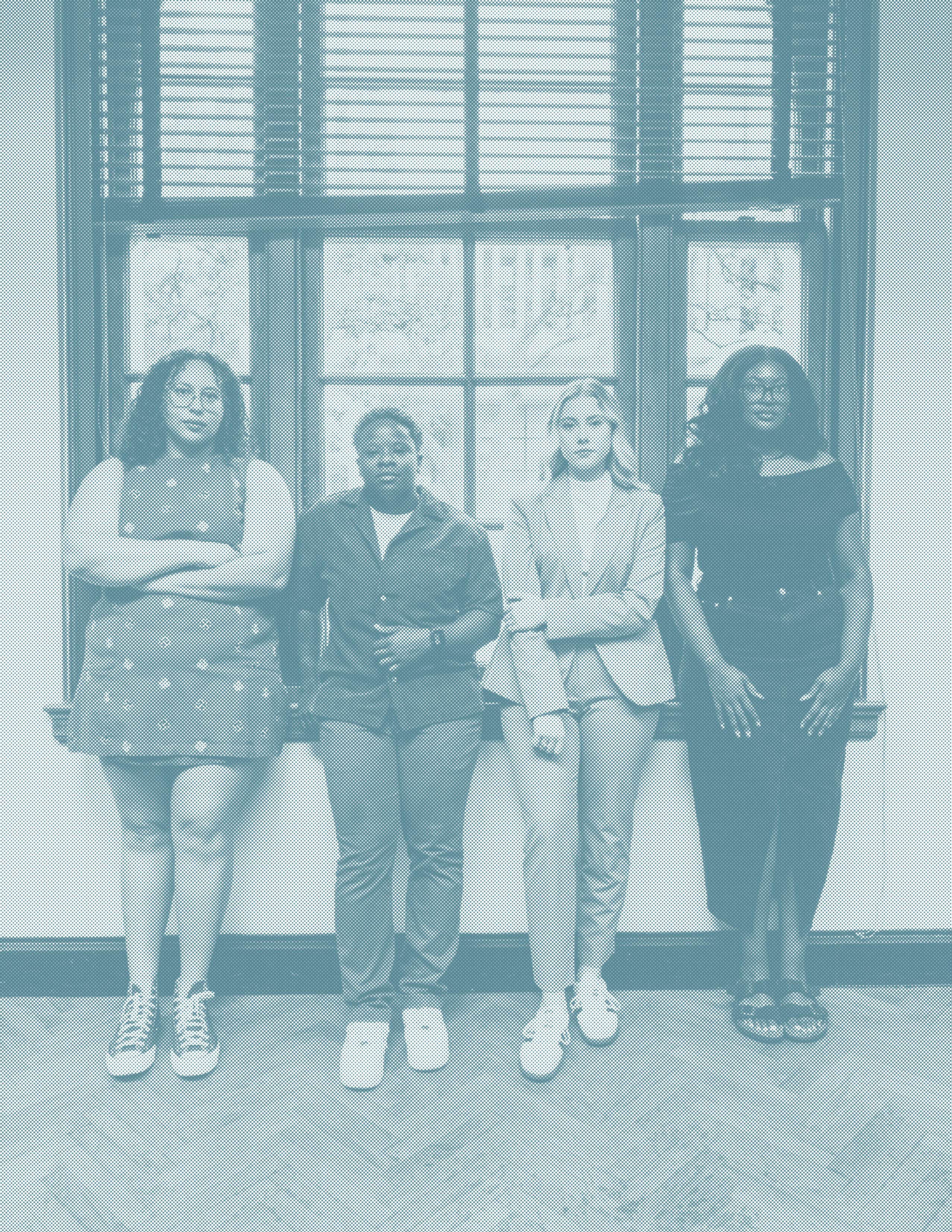New ALCHEMY
An investigation & analysis of strategic brand management


An investigation & analysis of strategic brand management


LETTER FROM THE AUTHORS
TESTING & OPTIMIZATION:
IMPOSSIBLE FOODS
Advertising holds immense power to shape perceptions and drive positive change in society. This magazine serves as a beacon, advocating for using advertising as a force for good. Through compelling storytelling and data-driven insights, it aims to spark conversations, challenge norms, and inspire action for a better world.
Impossible Foods leads a culinary revolution with plantbased alternatives. To sway traditional meat eaters, they have heavily invested in testing and optimization to create a sensory experience that mimics the experience of eating meat, with their plant based products.
08
10 12

CONSUMER RELATIONSHIP MANAGEMENT:
OLD SPICE
Understanding consumer behavior is pivotal in advertising. Old Spice’s success stems from recognizing women’s influence in men’s hygiene product purchases. Their iconic campaigns cleverly target both genders. By tapping into this insight, Old Spice maintains relevance through tailored marketing strategies.
DESIGN & VISUAL COMMUNICATION:
FENTY CONGLOMERATE
In today’s visual-driven world, effective ads resonate by reflecting diverse values and relatable content. The Fenty conglomerate, led by Rihanna, revolutionized the beauty and lingerie industries with inclusive campaigns, establishing the “Fenty Effect.” Their strategic marketing prioritizes authenticity and inclusivity.
ABOUT THE AUTHORS
All pursuing a Master’s of Arts in Advertising from the University of Texas at Austin with specialties in Texas Strategy and Texas Creative respectively, Jacqueline Cimino, Kennedy Lilly, KJ Juett and Lindsay Dube bring together a powerful blend of unique personal and professional experiences.

In an industry where skepticism and cynicism often reign, it’s crucial to remind ourselves of the profound impact advertisers can have. Every campaign, every message crafted, holds the potential to shape perceptions, influence behavior, and ultimately, contribute to positive change in our society. Our role extends beyond
mere promotion; it’s about shaping narratives that resonate, provoke thought, and drive action.
This magazine serves as a beacon, illuminating our collective mission to wield advertising as a force for good. Through compelling storytelling rooted in data and insights, we aim to

spark conversations, challenge conventions, and inspire not only ourselves but also our peers. Together, let’s harness the power of creativity and communication to make a meaningful difference in the world. We sincerely hope you enjoy our thoughtful investigation & analysis of strategic brand management.




As the food pendulum swings from and sustainability, Impossible Foods stands at the forefront of a culinary revolution. The goal of Impossible Foods is to replace the $1.4 trillion dollar global animal meat industry to reduce climate change.Their


rigorous testing are the three pillars of making this fake cow moo.
First, the brand must understand the psychology of meat eaters. Meat is more than meat; it’s perceived status, tradition, and cultural significance. Impossible Foods is first in line to recognize this and embarked on a multifaceted approach to tailor their product and advertising accordingly.
Impossible food invested heavily in sensory marketing. Vegetarians don’t need convincing to not eat meat, because of this traditional meat eaters became their target audience. Rather than simply screaming the virtues of their plant-based burgers, the brand focused on creating experiences that mimic the complete
without the associated ethical or environmental baggage.
Moreover, Impossible Foods understood the importance of social proof in influencing consumer behavior. They strategically collaborated with influencers, chefs, and celebrities known for their love of meat. These authoritative and loved figures shared their genuine experiences and endorsements
“Vegetarians don’t need convincing to not eat meat, because of this traditional meat eaters became their target audience.”
their basics but continuously tested and refined their advertising strategies. They employed A/B testing to compare different ad formats, messaging tones, and audience targeting parameters. By analyzing metrics such as clickthrough rates, engagement levels, and conversion rates, they gained valuable insights into what resonated most with meat eaters and adjusted




understanding of consumer behavior. Every advertiser is after ‘human insight’. Brands that grasp the nuances of their target audience are able to break through the cacophony of advertising. One brand that has mastered this art is Old Spice. Renowned for its iconic advertisements, Old Spice has managed to stay relevant for decades through the brand’s use
of a legendary consumer insight: women have the purchasing power regarding men’s hygiene products.
For decades, the realm of men’s grooming products was one note. Traditional strategies revolved around targeting men directly, emphasizing masculinity and selfconfidence. However, Old Spice saw an untapped opportunity – the unrecognized influence women wielded in the purchase decisions. 60% of body wash purchases are

made by women and 80% of all purchases are made by women. The brand recognized and embraced that many women play a pivotal role in selecting personal care items for their male partners and family members.
“...over a 100% increase in sales, in 300% increase a website traffic and a 2010 Cannes Lions Film Grand Prix award.”
The turning point came with the introduction of the now-iconic “The Man Your Man Could Smell Like” campaign in 2010. The suave and humorous portrayal of the Old Spice man, played by actor Isaiah Mustafa, resonated with female consumers, effectively tapping into their aspirations and desires for their significant others.
Old Spice’s marketing team understood that by appealing to wives, girlfriends, and mothers, they were speaking with a majority of the purchase makers and in turn targeting the end consumer. This insight fundamentally shifted their approach, inspiring a series of
advertisements that spoke directly to women. The launch of the ad campaign lead to over a 100% increase in sales, a 300% increase in website traffic and a 2010 Cannes Lions Film Grand Prix award. From commercials featuring charming protagonists to witty social media campaigns, Old Spice consistently portrayed its products as a means to enhance masculinity and appeal, catering to the desires of all genders. In conclusion, Old Spice’s journey to success serves as a testament to the power of appreciating, underlining, and stressing consumer behavior. By recognizing the pivotal role women play in purchasing men’s hygiene products, the brand was able to craft compelling campaigns that resonated with all its consumers. Old Spice not only secured its position as a leader in the industry but also demonstrated the transformative impact of tapping into unexpected consumer insights.







In today’s highly visual world, consumers are drawn to brands that reflect themselves and their values. Effective advertisements resonate with audiences by showcasing relatable content and diverse representations, allowing individuals to picture themselves within the brand’s story. Whether through inclusive imagery, authentic storytelling, or interactive social media campaigns, successful advertising strategies prioritize understanding and engaging with the target audience on a personal level.
With advertisements, brands can establish trust, loyalty, and lasting connections that extend beyond mere transactions.
Through strategic marketing campaigns

and an engaging social media presence, The Fenty conglomerate not only revolutionized the makeup and lingerie industry but established a powerful connection with its audience. By 2019 the brand was available in more than 150 countries, motivating others to follow suit and prioritize authenticity and inclusivity in their products and messaging which is known as the “Fenty Effect”.
Fenty Beauty, founded by Rihanna, hit the market in 2017. When Fenty Beauty debuted its first advertisement trailer the company garnered praise immediately, generating $100 million in sales in its first 40 days. Fenty Beauty included a diverse range of models which showcased the brand’s mission of “beauty for all”. Historically the makeup industry has been known for being an exclusive space. Many major makeup brands did not offer an inclusive foundation shade range or feature campaigns with a diverse range of models. Launching with 40 shades, the brand was immediately recognized as a critical innovation in its market and named as Time’s magazine’s best inventions in the same year of its launch. Fenty Beauty tapped into an underserved market by ensuring individuals who felt overlooked by the makeup industry were able to see themselves within the Fenty Beauty brand.
Rihanna’s lingerie brand, Savage x Fenty was released only shortly after in 2018. With success mirroring the beauty brand, sales grew by more than 200% in 2020 despite the global pandemic. The lingerie brand followed
a similar model featuring a wide variety of models and influencers fostering a sense of inclusion.
The Fenty Beauty and Savage x Fenty Marketing team heavily relied on visual elements to market to customers. The conglomerate boasted a whopping $72 million in earned media value from one month in 2023 alone. Fenty showcases their products through social media platforms, influencers, brand YouTube channels, an annual Savage x Fenty fashion show, and even the Super Bowl.


Kj Juett has remained justice oriented in all of her storytelling across her professional career. She holds a Bachelor of Arts from Duke University in Visual and Media Studies with a certificate in Art of the Moving Image. Juett is currently pursuing a dual-degree at the University of Texas Austin, composed of a Masters of Arts in Advertising and Masters of Business

Administration in marketing. Standing tall in all of her marginalized identities she recognizes what her presence alone means to these predominantly white universities. Representation matters and more importantly continuous learning to challenge bias matters more. Her goal is to work predominantly with brands that prioritize speaking to their consumers as a diverse audience, recognizing their unique experiences. An aspiring Art Director currently on the Texas Creative track, her portfolio has been crafted with equity in mind building from a diverse series of brands..
Kennedy Lilly was raised in the vibrant city of Austin, Texas. Growing up in the area led her to pursue a bachelor’s degree in English and a minor in Sociology at The University of Texas at Austin, where she immersed herself in campus life. It was during this time that Kennedy discovered her natural knack for leadership and found herself gravitating towards advertising roles within various student organizations. In her exploration of the industry, she was drawn to the captivating world of strategic communication and brand storytelling. Her passion for the fields sparked the desire to continue her journey as a student to the craft,


 Left to Right: Kj Juett, Kennedy Lilly, Jacqueline Cimino, Lindsay Dube
Left to Right: Kj Juett, Kennedy Lilly, Jacqueline Cimino, Lindsay Dube
currently pursuing a Master’s Degree in Advertising and Public Relations.
Jacqueline Cimino is a force to be reckoned with. Currently pursuing a Master’s of Arts in Advertising with an emphasis in data analytics at the University of Texas at Austin, Jacqueline has worked in ad agencies large and small to learn how to intertwine diversity and inclusion into data storytelling. From her strategy work at Slingshot Ad Agency in Dallas, Texas to her analytical analysis at the renowned Wieden and Kennedy in Portland, Oregon, Jacqueline has made impactful contributions to better the ad agency. Jacqueline attended the University of San Francisco where she received
her Bachelor’s in Advertising and minors in African-American Studies and business. During her time in San Francisco, Jacqueline’s most proud accomplishment was becoming the first Black programmatic advertising at Oracle. Jacqueline always notes that it is not about the destination, but the people who help you get there.
Lindsay Dube is a talented wordsmith and currently pursuing a Master’s of Arts in Advertising at the University of Texas at Austin.
Specializing in copywriting as part of the Texas Creative sequence, Lindsay is dedicated to crafting compelling narratives that resonate with audiences.

Drawing inspiration from her rural upbringing, Lindsay is known to tackle any creative challenge with grit and determination. Through her years of professional publication experience, Lindsay is a proven editor with an eye for detail. With a dual Bachelors in Agricultural Communications and Creative Media Industries from Texas Tech University, Lindsay brings a unique blend of creativity and industry knowledge to her work.




brands are created in the - walter landor